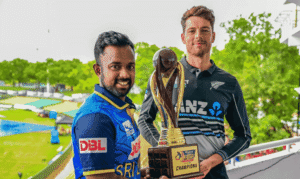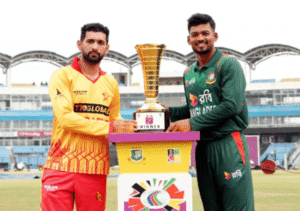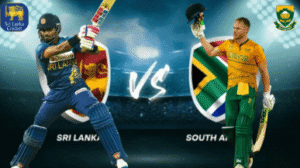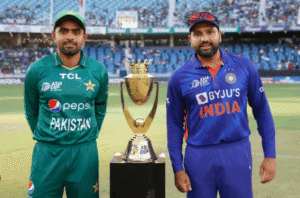Sports have the remarkable power to transcend boundaries, unite communities, and inspire individuals from all walks of life. Yet, for much of its history, the world of sports has been marked by exclusion, discrimination, and inequality, with certain groups facing systemic barriers to participation and representation. In recent years, however, there has been a growing movement towards greater diversity and inclusion in sports, driven by a recognition of the value of diversity, the power of representation, and the importance of creating a level playing field for all athletes. In this exploration of breaking barriers in sports, we delve into the challenges faced by underrepresented groups, the progress that has been made towards greater diversity and inclusion, and the ongoing efforts to create a more equitable and inclusive sports landscape.
The Importance of Diversity in Sports:
Diversity in sports goes beyond mere representation—it’s about recognizing and embracing the unique perspectives, experiences, and talents that each individual brings to the table. A diverse sports community enriches the sport itself, bringing new ideas, innovations, and approaches that benefit athletes, coaches, and fans alike. Moreover, diversity in sports serves as a powerful tool for social change, challenging stereotypes, breaking down barriers, and promoting understanding and acceptance across lines of race, gender, ethnicity, sexual orientation, and ability.
Challenges Faced by Underrepresented Groups:
Despite the progress that has been made towards greater diversity and inclusion in sports, significant challenges persist for underrepresented groups. Women, for example, continue to face barriers to equal participation and representation in sports, with fewer opportunities for funding, sponsorship, and media coverage compared to their male counterparts. Similarly, racial and ethnic minorities often encounter systemic barriers to access and advancement in sports, including lack of resources, discrimination, and cultural stereotypes. LGBTQ+ athletes also face unique challenges, including discrimination, harassment, and lack of visibility and support within the sports community. Additionally, athletes with disabilities continue to confront physical, attitudinal, and institutional barriers that limit their opportunities for participation and success in sports.
Progress Towards Diversity and Inclusion:
Despite the challenges, there have been significant strides towards greater diversity and inclusion in sports in recent years. Women’s sports, in particular, have seen tremendous growth and visibility, with increased investment, sponsorship, and media coverage contributing to the rise of female athletes as role models and ambassadors for the sport. Similarly, initiatives such as the Rooney Rule in the NFL, which requires teams to interview minority candidates for head coaching and senior football operation jobs, have helped to increase representation and opportunities for coaches and administrators from underrepresented backgrounds. In addition, organizations such as the Special Olympics and the Paralympic Games have played a pivotal role in promoting inclusion and empowerment for athletes with disabilities, challenging stereotypes and raising awareness about the capabilities of individuals with disabilities.
Promoting Diversity and Inclusion in Sports:
While progress has been made, there is still much work to be done to promote diversity and inclusion in sports. It requires a collective effort from athletes, coaches, administrators, fans, and policymakers to create a sports culture that is truly welcoming, inclusive, and equitable for all. This includes implementing policies and practices that promote diversity and inclusion at all levels of sports, from grassroots programs to professional leagues. It also involves challenging stereotypes, biases, and discriminatory attitudes within the sports community, and fostering a culture of respect, acceptance, and support for athletes from all backgrounds. Additionally, it’s important to provide access to resources, facilities, and opportunities for underrepresented groups, ensuring that all athletes have the chance to pursue their passion and reach their full potential in sports.
The Power of Representation:
One of the most powerful tools for promoting diversity and inclusion in sports is representation—seeing athletes who look like us, come from similar backgrounds, and share our experiences can have a profound impact on inspiring and empowering individuals from underrepresented groups. Representation not only provides role models and mentors for aspiring athletes but also sends a powerful message that anyone, regardless of their race, gender, ethnicity, sexual orientation, or ability, can succeed and thrive in sports. By increasing visibility and representation of underrepresented groups in sports, we can break down stereotypes, challenge norms, and create a more inclusive and equitable sports culture for future generations.
Conclusion:
Breaking barriers in sports is not just about leveling the playing field—it’s about creating a world where every athlete, regardless of their background or identity, has the opportunity to participate, compete, and succeed on their own terms. It’s about recognizing the value of diversity, the power of representation, and the importance of inclusion in shaping the future of sports. By working together to challenge stereotypes, dismantle barriers, and promote diversity and inclusion in sports, we can create a more equitable, accessible, and welcoming sports landscape that celebrates the unique talents and contributions of all athletes, and inspires generations to come.














Post Comment